There are so many best video cameras for hunting filming out there, but which type suits your application best?
In this guide, I’ve compiled a list of the top 5 cameras that record your deer hunting adventure with PRIME footage (4k/ 1080). The best part? There are some affordable options if you’re new or on a budget.
So if you want to start self-film your own hunt and share it with your friends, this is your go-to list. Let's get into it…
Best Video Cameras for Hunting:
Top 5 Cameras for Hunting Filming Reviews:
1. Canon XA40 Professional Video Camcorder:

Via Amazon.com
Briefly Specification:
This camcorder is suitable for beginner users. It delivers high-quality, 4K UHD, MP4, and AVCHD recordings.
Key feature: Fantastic low light capturing
We have tested it in the field, and we can confirm that 1080p, 4k recording can capture even the fast-moving game in poor light conditions.
This camcorder features improved low-light performance. Its Pro Image Sensor offers approximately 1.2 lux in Auto Mode and 0.1 lux in Low Light Mode securing excellent shots even in the dark surroundings.
Thanks to the low-luminance noise rating of +3 dB, the Canon XA40 camcorder can record the minuscule details even when there is almost no light.
There's more:
Canon XA40 boasts a 20x Optical Zoom allowing you to magnify your prey when hunting from a long distance.
Besides that, you can capture fast moving deer with slow motion (up to 1200x) and zero shaking.
It is an excellent feature for both bow hunting and rifle hunting as it secures blur-free recordings from afar.
Support external microphone input and remote control
This Canon camcorder has a Mini Advanced Accessory Shoe that enables you to attach a shotgun mic and improve the audio quality. You can also purchase the Canon WM-V1 Wireless Microphone compatible with this camera.
You can use it for self-filming hunts, too, as it features a Remote Control Terminal (compatible with LANC protocol). You can pair it up with a wireless remote controller and shoot your recordings with minimal movement.
Long battery life
The rechargeable BP-820 battery secures a long battery life. It allowed us 2 hours of shooting which was more than enough to film our entire hunting adventure.
Thanks to the intelligent technology that indicates the remaining battery time, you can plan ahead and never miss a good hunting action. Still, we recommend having a backup battery just in case.
Auto focus and Manual Focus
Canon XA40 features both Manual Focus and Auto Focus, so you can use both and get the best possible recordings.
Drawback
On the downside, this camcorder is not the best option if you plan to take photos since it has only around 3 megapixels, and you are much better off using your smartphone.
Pros:
Cons:
2. Sony CX405 Handycam:

Via Amazon.com
Briefly Specification:
If you are on a low budget and only just began self-filming your hunting adventures, Sony CX405 Handycam might be an ideal camera for you.
Key feature: Compact weight
It is a 1080p Full HD camera that can capture both videos and photos. Being highly compact and lightweight (6.7 oz), you won't even need to bring a tripod, even though you'll get one in the accessory bundle.
There is no need to read the manual before using this Sony camera because of simple controls. The commands are relatively straightforward.There are only two buttons: a start/stop button and a capture button.
The Intelligent Auto will take care of all the other settings for the best results, even at night and backlit scenes.
Not so good at low light recording
Considering its price, the Low Light Capability of 3 lux (1/30 Shutter Speed) is entirely satisfactory. However, your recordings might seem a bit dark when shooting turkey hunting at dusk or deer hunting at dawn.
This Sony CX405 camcorder features a Zeiss 30x optical zoom lens, making it a good choice for bowhunters and long-range hunting in general.
It allows you to enlarge the animal you are tracking from far away, even when it is still out of your range.
Moreover, thanks to the face detection feature, it can track and capture living subjects and help you get excellent recordings of your prey.
Built-in mic
The integrated mic will record decent audio, but it is still rather unfortunate that you cannot attach an external microphone.
As a result, you are likely to get a lot of noise while filming on your treestand.
The sound quality is greatly diminished when playing the recordings, so buy this cam only if the sound quality is not essential to you.
2 hour battery
The Rechargeable Lithium-Ion Battery battery will last you for a maximum of two hours, and it takes around three hours to recharge it to its full capacity. Always have a backup battery and a charger!
There is no LANC port available, but you can connect the remote controller to the Multi-Terminal (it has an integrated remote control terminal). You will need to buy it separately, though.
High resolution camera
Finally, and most importantly, the picture quality this Sony cam produces is impressive. It can record AVCHD and MP4 videos at 1920 x 1080/60p resolution.
The Optical SteadyShot image stabilization guarantees smooth video footage even when you have to chase your doe.
You can capture a lot of landscape and animal movement in a single frame thanks to the 29.8mm wide-angle lens.
Pros:
Cons:
3. Sony A7S II Camera:

Via Amazon.com
Briefly Specification:
Sony A7S II camera might be too pricey and a bit heavy (22.12 oz with battery and memory stick) for hunting filming.
Key feature: Silent Shooting
All hunters will surely appreciate how silent this DSLR camera is. When you choose a Silent Shooting Mode, you will be able to record your videos with almost no noise and thus stay undetected by your prey.
For professional filming
Still, this full-frame 4K mirrorless camera is more than suitable for professional users that require top-notch video quality.
Thanks to the Exmor CMOS extra sensor, this camera features superb Low Light Capability as well.
You can see many details when filming at night - maybe even more than when not looking through the cam.
It is all due to the extremely sensitive lens with an aperture of 2.8 or lower (f/1.4, f/1.8, or f/2.8).
What is Aperture?
Aperture is a term that stands for the opening on the camera lens through which the light can enter the camera.
The value of aperture can be found on the lens or in its description (for example, f/2.8 or f/3.5-5.6). The lower the value of the aperture is, the better will the camera perform in low light conditions.
Sony A7S has 4x Digital Zoom, and its Optical Zoom depends on the lens you install. All DSLR cameras function like that.
External mic supported
You can record audio to complement even the most exciting hunting adventure, thanks to the built-in microphone.
If you want to make sure you can capture all the nature sounds, you can add an external mic. For example, Sony ECM-XYST1M / XLR-K2M will significantly improve your sound performance.
Short Battery
Battery life is the greatest disappointment of the Sony A7S II camera. You will be able to record only about an hour of video footage at best. You should thus always bring some spare batteries.
Sony A7S II does not feature LANC support, but the remote control is still possible if you can find a remote desktop controller.
You can also use the provided built-in WiFi capabilities and a smart device to self-film your hunt.
Support auto and manual focus
The Advanced Fast Intelligent Auto Focus enhances the accuracy of your recordings even in the dark or when shooting fast-moving objects/animals. Sony A7S II guarantees clear stills and movies.
Manual focus and Anti Shake system enable you to record your prey with minimal effort. The 5-axis optical image stabilization minimizes blur too.
Pros:
Cons:
4. Canon EOS 6D:

Via Amazon.com
Briefly Specification:
Canon EOS 6D is another DSLR that earned its place on our list of best cameras for filming hunts.
It is used in many hunting shows and quite expensive, but still a highly popular option due to its user-friendly interface and all-in-one type features.
Even though it is a bit heavier than Sony A7S II (weighing 26.7 oz), it is compact, which makes it suitable for your hunting adventures. After all, it is one of the lightest full-frame Canon cameras you can get.
1080 HD resolution
Being resistant to both dust and water makes this DSLR a perfect companion for all hunters. It offers 1080p HD Video Capture Resolution, which is not bad, but it would be better if it were 4K.
Remarkable low light shooting
Canon EOS 6D features a 20.2 megapixel CMOS sensor with a precision 11-point AF system and remarkable Low Light Capability.
We have confirmed its improved performance and focus in lack of light conditions on the field.
The best performance is achieved when you focus on central objects and prepare for the shot in advance. You can also use the Manual Focus.
Dual purpose camera
This DSLR is perfect if you want to both film your adventures and take stunning wildlife photographs.
It comes with a 50x Optical Zoom lens, so you’ll be ready for long-range hunting right from the start. It’s excellent news for bowhunters.
Built in microphone
When it comes to audio recording, you can rely on a built-in microphone of quite decent /quality. Still, we recommend the use of an external mic such as Directional Stereo Microphone DM-E1.
It would secure better audio quality with no noise. You would also be able to capture all the sounds of elk call and bugle.
Long battery
We have tested the battery life and managed to film around 1 hour and 35 minutes of video footage.
Quiet recording
The operation is relatively silent due to low vibration shooting mode. It means that you can remain hidden while targeting your prey.
The remote control is possible via the EOS Remote app. Alternatively, you can use an external remote controller such as Polaroid Shutter Release Timer Remote Control.
Pros:
Cons:
5. GoPro Hero 9:

Via Amazon.com
Briefly Specification:
If you want to self-film your hunting and stay on a budget, check out the GoPro Hero 9 action cam. It is made for adventure and action.
2nd angle camera
No matter how much or how quickly you move, the videos you record will remain blur and shake free. You can use it as a second camera for excellent shots from your point of view.
The built-in 1.4-inch display allows for live preview so that you can make sure you’re in the center of a shot or a video.
That front LCD screen can also show the remaining battery power, resolution, and current settings.
The Hero 9 is waterproof to 33ft/10 and comes in a soft travel case you can use to protect it from any damage in harsh outdoor conditions.
5k quality recording
Hero9 Black has a 23.6 MP sensor, which can capture video at 5K in 30 frames per second (fps) at 100Mbps. Quite impressive!
The Hypersmooth 3.0 is there to stabilize footage across all resolutions. You can turn on the Boost option when the action gets serious about smoothing things out even better.
Not for low light capturing
Low Light Capability is not as impressive, though. This camera is not designed to film in a dark environment but can still capture moving prey in motion in “night mode” reasonably good. Scheduled capture mode allows you to film a video while you rest.
All action cameras have a fixed-focus lens, GoPro Hero 9 is no exception.
You might not be able to adjust the focus but the photos that are out of focus are quite rare - even when you are shooting a subject right in front of the camera.
It would be best to keep a minimum focusing distance of about 12 inches, though.
Built-in mic
This GoPro has a built-in mic, but it is not a perfect choice for recording audio. You need to keep it as close as possible to the sound source.
If you want to record your voice, best mount it to your head or chest. There is no need for remote control.
Long battery (100 min)
The 1,720mAh battery secured us around 100 minutes of recording time when filming in 1080p.
It might not seem like a lot, but it is enough stamina to get a good shot. The USB-C allows you to plug the cam into a battery and use it that way.
Pros:
Cons:
Types Of Video Camera For Hunting Filming:
There is an array of different cameras that are more-less suitable for filming your hunting adventures. It can be quite overwhelming to choose one that will best suit your needs.
First of all, you need to decide which type to pick. Here is a detailed guide that should help you make an informed decision:
1. Camcorder:

Camcorders are the backbone of self filming hunts. They are user-friendly, require little movement, and are very silent - which can be crucial for the success of your hunting spree.
Camcorders are small, light, and have a manual focus. Due to superb built-in zoom capabilities, you do not need to spend a fortune on expensive lens types.
Most camcorders offer optical zoom well above x10. Long battery life is yet another big plus for this type of camera.
Pros:
Cons:
2. DSLR:
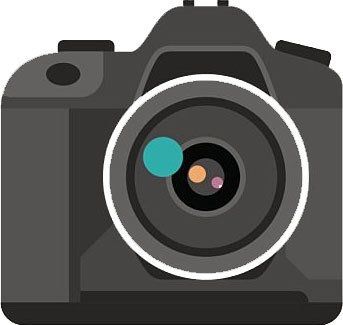
If you want to record professional videos that you can post to YouTube or a web show, you should best get a DSLR type of camera. It will make this task much easier for you.
It is an excellent overall camera to have around for hero shots, footage, and for filming hunts. It can be perfect for stunning time-lapses too.
On the downside, DSLRs are not as easy to handle and silent as camcorders. You might need to purchase a huge and expensive lens, too, if you want quality long-range zoom. Optical zoom is usually under 10X.
Besides manual focus, DSLRs usually have auto focus as well, but the footage might come out a bit blurry if you rely on this option.
Pros:
Cons:
3. Action camera:
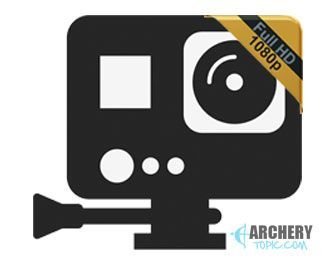
An action camera allows you the freedom of movement while you record live action from the 2nd angle. It is a perfect solution if you go hunting alone.
Most action cameras are compact and rugged and can be mounted on your hat or chest.
Being compatible with most devices, you’ll have no trouble uploading or posting your videos.
Action cameras are built for outdoor adventures and are thus usually waterproof at surface-level. They feature CMOS image sensors.
You can record high-definition video as well as take photos in burst and time-lapse mode.
High-end units can record 4K video at 60 fps too. Many action cameras have an option to record slow-motion videos at 120 or 240fps.
Pros:
Cons:
What To Look For When Buying an outdoor video camera for hunting?
In this section, we are going to go through all the things you need to consider before you open your wallet and spend your hard-earn money on a camera.
Budget

We cannot know your budget and how much you can spend on a camera for hunting filming, but it is crucial to set your limit before going out shopping.
The price range is vast, and you can spend as little as a few hundred dollars to as much as a couple of thousands.
Do not be thrifty. Quality costs money. It is better to spend a bit more and get all the features you need now than having to upgrade in a matter of months.
Beginners can start at a low price range and choose a basic camcorder that will be easy to use.
Professionals will have to spend much more on high-end, feature-packed DSLR.
Low Light Capability

When it comes to features, the low light capability is a must, especially when deer hunting.
Experienced hunters know that deer and most other game usually appear at dawn and dusk.
If you want to avoid your shots being too dark to see any details, you'll need to get a camera that can record in low-light conditions.
The bigger the sensor (Lux) your camera has, the better footage it will capture in a dark environment.
Large sensors allow more light to come in and shoot even in the darkest conditions (0 Lux).
What is Lux?
When browsing for cameras, always check the minimum illumination number found on the camera's specifications sheet.
This feature is defined by the term Lux. Some manufactures will label this same feature as "low light mode," so do not let that confuse you.
The critical thing to remember is that the lower the value of Lux is, the better the camera will perform at low light conditions.
It is best to opt for a value of 4 or less if you expect to do a lot of low-light filming.
Optical Zoom

You should invest your money in optical zoom since digital zoom has little to do with high-quality images and recordings.
Do not be tempted to buy a camera with 100x digital zoom. Even at this value, you will not be able to see almost anything since digital zoom degrades the quality of the video.
The rule of the thumb:
The higher your optical zoom is, the better. High optical zoom is significant for bowhunters and rifle hunters as they hunt at great distances.
It is generally recommended to opt for at least 10x, while long-range hunters should go for an optical zoom of at least 20x.
What does it mean 10x, 20x?
It means that you will be able to see things ten or twenty times bigger than the original.
The good news is that most DSLR cameras feature 10x optical zoom, while camcorders go well above x10.
Audio
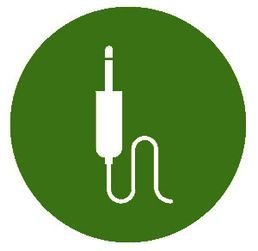
The outdoors is always loud, especially when it is windy. Luckily for all the hunting enthusiasts, most modern cameras have a built-in microphone.
If you want the sound of your video to be of the best quality, it might be wise to add a shotgun microphone. It can reduce the notorious wind noise from a ladder treestand and thus capture audio of much better quality.
Not all cameras have an accessory shoe that allows you to mount such a microphone, so check that when buying yours.
If you have already bought a camera without it, you can purchase some brackets online that will enable you to attach a shotgun mic.
When it comes to DSLRs, you will connect an external mic via a micro USB port.
Consider using a dead cat mic cover too. It is a furry cover that will help reduce the surrounding noise and get the best clear-cut audio quality.
Battery Life
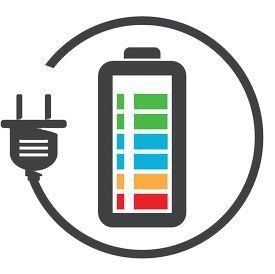
Hunting has a lot to do with patience. Sometimes you’ll need to spend hours hiding and waiting for your prey to appear.
Your camera should thus have a long battery life that will increase your chances of getting a perfect shot once the action does start. Camcorders usually excel in this matter.
You should always have extra batteries or a portable charger with you. In this way, you'll never have to regret missing an excellent hunting action.
Silent Operation

It is imperative to keep a low profile when lurking for your prey.
To do that, you need to be quiet, and that's why your camera has to be very silent as well. You do not want to spook deer or other game.
Camcorders and action cams are usually very silent, but you might experience some issues when capturing an image with a DSLR camera.
Remote Control

Via manfrotto.us
The remote control allows you to cut down on movement and remain hidden from your prey. It serves to zoom in/out or start/stop filming.
It is handy if you want to self film your hunt. By using the remote control, you can manage multiple cameras and film the action from different angles.
How can you tell if the camera you are considering has a remote control?
Simply check whether it has a LANC (Local Application Control Bus System) output or Wi fi/NFC connectivity.
If yes, you will be able to control it from a remote controller. LANC control jacks have the same function as jacks labeled CONTROL L or REMOTE.
It is good to know that LANC outputs are mostly found in older camera models.
More recent cameras, such as all Sony's models made after 2015, do not have this feature, and you will have to find other remote control options.
Nowadays, you can install different mobile apps that let you control your DSLR and other cameras.
These apps also enable you to download and share your creations fast and easy. You can connect the camera via USB or WiFi or use your mobile hotspot when you are on the go.
Resolution
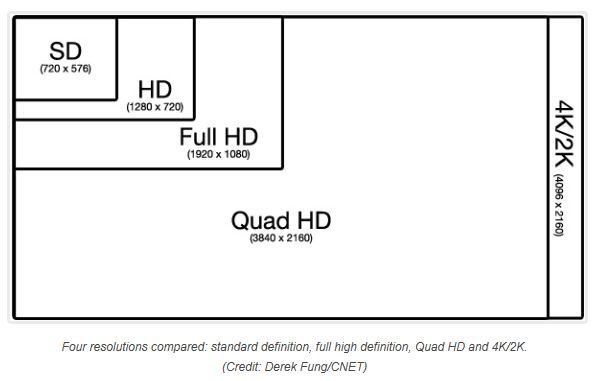
Via 4k.com
When it comes to camera resolution, you have the following options: SD, HD, Full HD, Quad HD, and 4K/2K.
You should go for at least full HD if you want a high-quality video that you can upload to YouTube or Facebook.
Focus
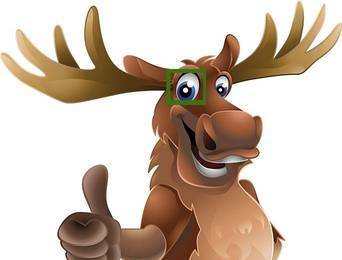
Manual focus is essential for all camera man who value clear shots. The good news is that both camcorders and DSLRs have this feature.
It takes some time to master manual focusing, but when you do, you can create great shooting of moving objects even in low light conditions.
DSLRs have autofocus as well. However, autofocus often produces blurry footage, especially when shooting fast-moving animals.
Anti-shake System
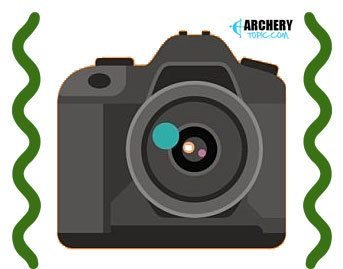
If your camera features an anti-shake system, it can compensate for unwanted movement of the camera that could blur your photos or create visual 'judder' in your video recordings.
There are two types of anti-shake system:
Bottom Line:
No matter which camera you choose, you'll be able to film your hunting adventures and enjoy watching them whenever you want.
Each camera on the top 5 list has its advantages, but we still give our vote to the Canon XA40 Professional Video Camcorder which is best video camera for hunting filming.
Editor's Choice:

Via Amazon.com
If you’re recording your hunt from a tree stand, I suggest to invest into a good camera arm to for better holding.
